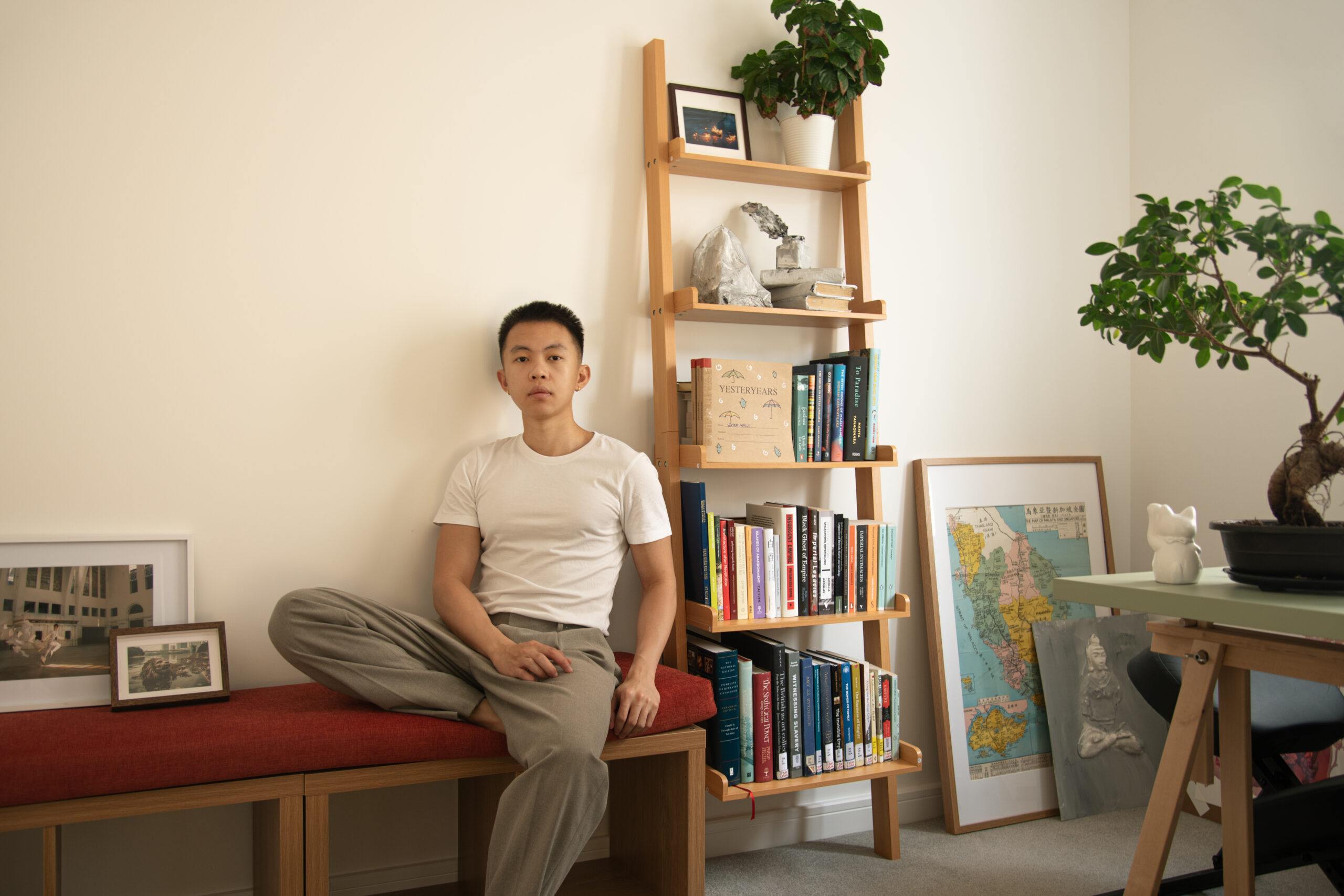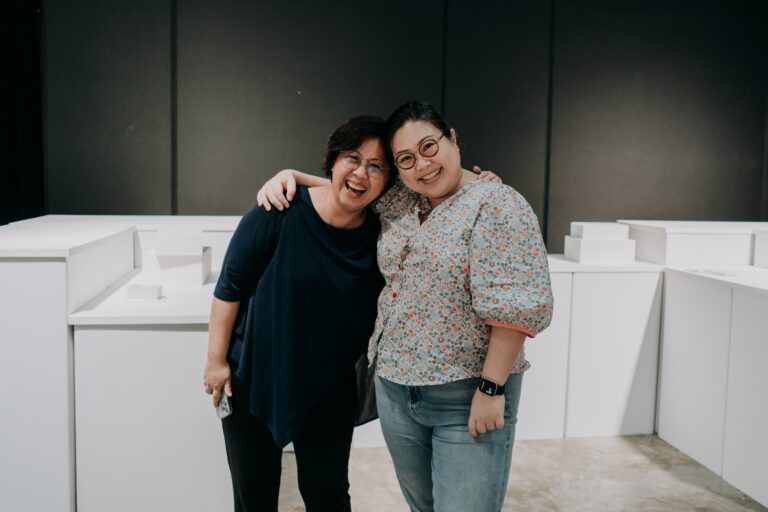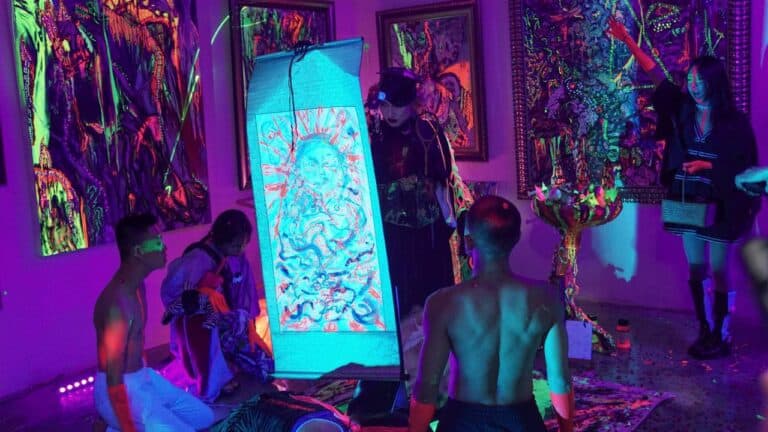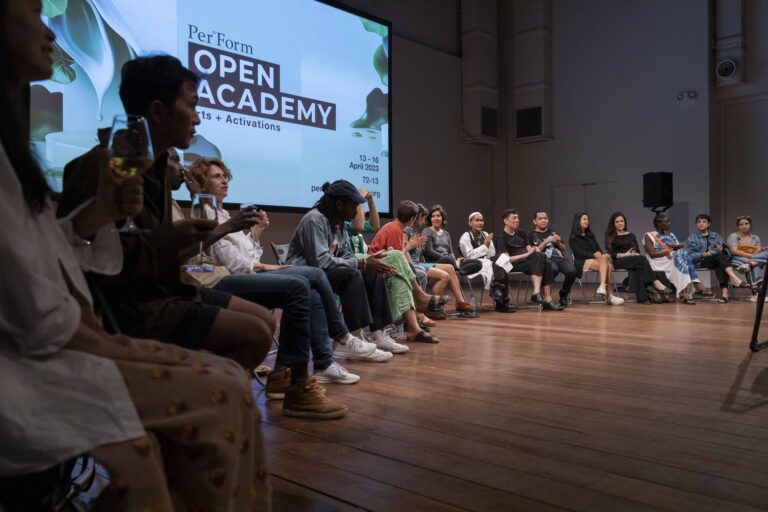On Singapore’s National Day this August, as fireworks burst and his home city streamed in red and white under the flypast, Sean Cham cooked a quiet dinner of cai tao keuh (carrot cake) in his West London flat.
While he has lived in London since 2019, pursuing a PhD with Birkbeck University and the National Gallery London on networks of Empire, family, and art, his home country’s food is a reminder of his roots.
“Even here, I try to make Singaporean dishes,” Cham says when we meet over hot chocolate in the cavernous stone halls of London’s National Gallery. “Cooking dishes from home makes [Singapore] still very much part of my identity”
Now, as he plans potential projects for Singapore’s SG 60 celebrations, the multi-disciplinary artist is looking forward by looking back at Singapore’s own identity, heritage and history.
A record of forgotten pasts
Personal and national identity have long been interlinked for Cham. His first professional series Yesteryears (2015) confronts the viewer with a series of haunting in situ self-portraits across 50 abandoned and forgotten places in Singapore.
We see Sean, flip-flop clad and pensive, leaning against the veranda of an abandoned kampung bungalow.
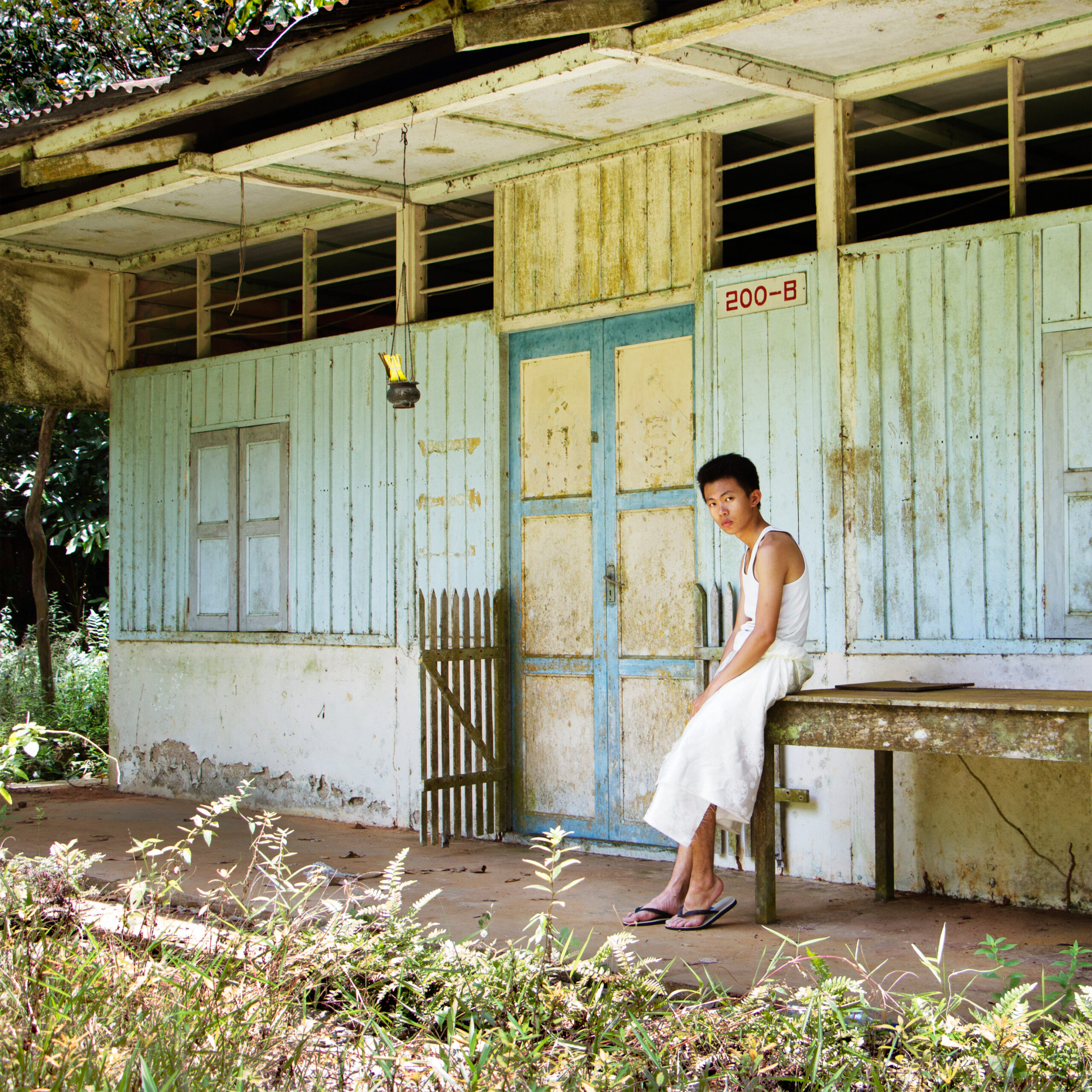
A pair of Seans squat mid water fight in front of the salmon-pink sign of the former National Aerated building, a cream Art Deco oblong that once fuelled Malaya with up to 48,00 bottles of soft drink a day.
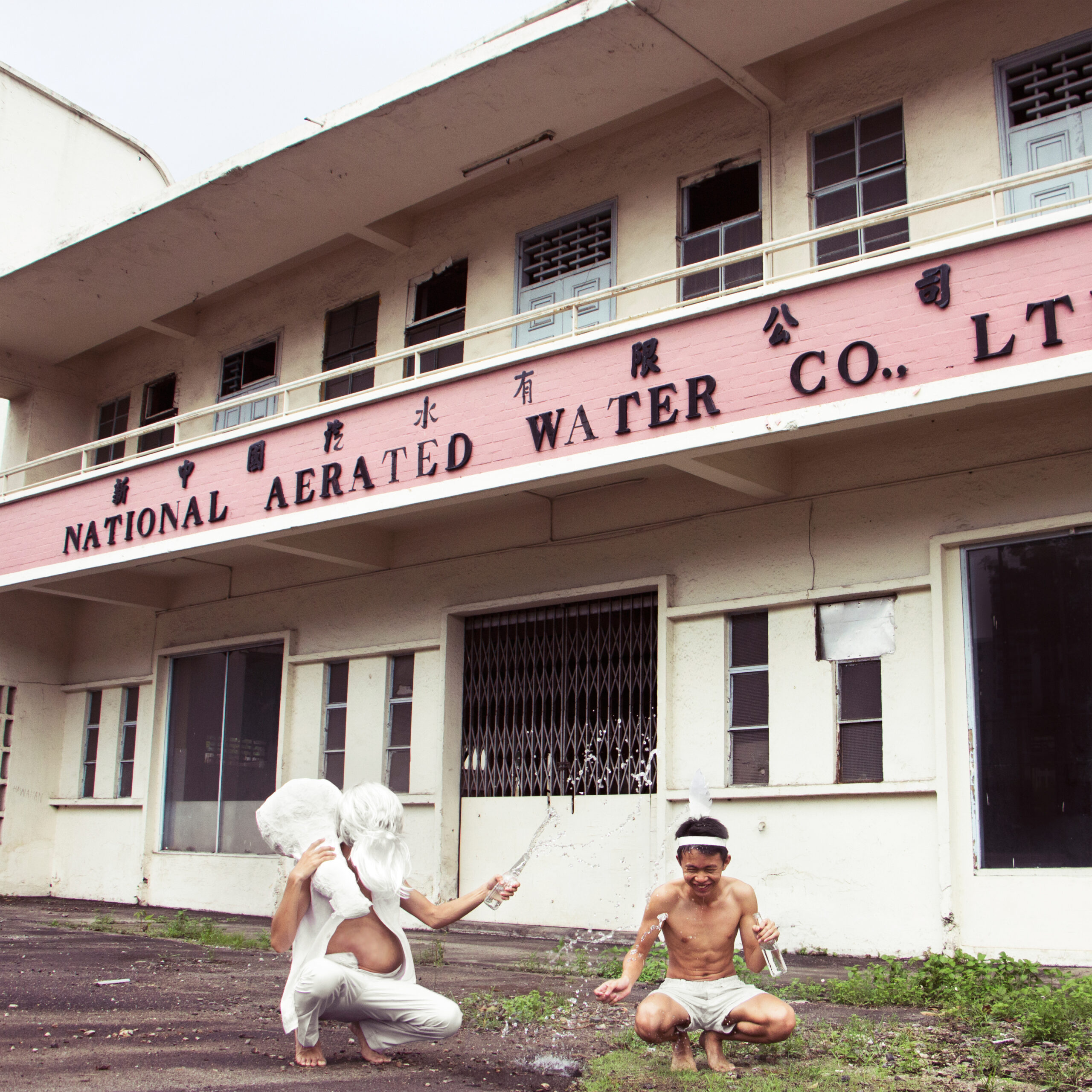
Troops of Seans crouch in pristine combats amongst the rubbish bags and fallen leaves of a dilapidated brick fort.

The haunting nostalgia and interweaving themes of past and present were intentional on a personal and national level. As Singapore celebrated 50 years of independence, his grandmother’s house, a five storey HDB in the central Tiong Bahru district, was slated to be demolished to make way for new urban development. This period was an opportunity for Cham to reconnect with his childhood passion for art and to reflect on the change that was happening in his own family life.
“It was very old, but [it] still had its charm,” Cham recalls. Although his grandmother now lives in a new apartment block with modern amenities, her old home has joined the ranks of many beloved buildings with forgotten pasts that have been wiped out in the Lion City’s rapid quest for progress. In May this year, another historical building, The Golden Mile Complex, was sold to commercial property developers for redevelopment. As long-term tenants continue to be turfed out of former homes and workspaces, Cham notes the disconnect between the carefully preserved heritage quarters of Chinatown and Little India and the more mundane structures that have been overlooked.
“[These] demolished places held so much memory and so many stories for people growing up that lived there, visited there,” he says. “All these memories will be demolished alongside the building… stories of everyday life that are not part of the national narrative.”
Investigating national narratives and AI futures


Upending this national narrative, sometimes literally, is a running thread in Cham’s work. Released as a series of thought experiments on the artist’s Instagram profile this year, the artist’s latest work Afteryears captures recognised themes of national identity and power submerged in various states of decay. The Merlion statue has sunk, only its head visible above a dull surface of water, scattered with sticks and debris. Sir Stamford Raffles, the East India Company official who founded Singapore as a British colony in 1824, is immortalised in mud-streaked marble and buried neck deep in soil and foliage. In another photograph, dust and rubble fill the empty dome of the Singapore National Museum.
“I wanted to take these national symbols and turn them on their heads,” says Cham. “How do we imagine them in the future?”


Midjourney, a generative AI programme, is used to create the images – a futuristic method to tackle themes of history and heritage – and for Cham, the technique follows the same principle as his more traditional installations. While he notes that the use of AI to generate images is increasingly at the expense of human artists and their livelihoods, here, it is a tool to complement, rather than quash, his creative process. “I engineer certain prompts to create a certain composition,” he explains, “which is quite a similar process to how I’ve been creating my previous works, where I imagine the space as a theatrical set where I place my props and actors.”
Afteryears’ imagined future places humans in a state of ruin and society in a state of reset where, due to over-urbanisation and the climate crisis, “we are forced to go underground.” But there is a hopeful element to the apocalyptic imagery. Cham sees the wildness of the series as a sort of rebirth, where the natural environment takes centre stage.
“I’ve [placed] humans in this sort of sublime space that is taken over by nature,” he says. “And it’s almost hopeful, in a sense of what the future might look like.”
Revisiting colonial history back home
If Afteryears tackles heritage through imagined futures, Cham’s current and future projects are more preoccupied with recharting his country’s history. In particular, he aims to question the touted national narrative of Singapore’s growth from a sleepy fishing village to a modern metropolis, and the role of the British Empire in this journey.
“I don’t think that it’s talked about enough in Singapore [and] it’s always been fluff-painted with a rose-tinted lens,” he says. “The British came, sure they colonised us, but there’s always the idea that they brought more progress… I wanted to know more about [it].”
This is a topic that Cham explores in his work Washing White (2020), where he visited Raffles’ North London home. The piece, an output from a 24-hour durational performance, is a 2.5 minute video of Cham on one half of a split screen, manoeuvring cat-like over dust-sheet covered furniture. In the other half, wide monochrome shots pan over the empty innards of the classical 19th century mansion. A voiceover fires uneasy statistics in English and Mandarin; around 3,375 addresses in the UK have connections to slave owners, and at least 93 National Trust properties have historical ties to the slave trade, with 33 linked to the East India Company.


“It’s kind of turning history on its head, right? Going to the coloniser’s house,” he reflects. “This house was dilapidated. It was completely abandoned. There were two lion statues that were supposed to be on the entrance of the house that had completely toppled over, which is kind of nice.”
Dark as British colonial history may be, Cham takes a philosophical approach. Singapore being a tiny island, if the British hadn’t colonised us, he reasons the Dutch or another western force would have, and points out how this underlying fear of larger empires has fuelled our national narrative of self-sufficiency. “There is this idea of self-reliance that the government is always trying to push forward,” he says. “Because we don’t have natural resources, we’re a small country, we need to be self-sufficient. What other territories went to conquer or colonise Singapore? We have to rely on our own forces.”
Looking forwards, looking backwards
With his next project, he hopes to take these explorations of colonialism further, and bring them back to Singaporean shores. He is currently working with arts organisation DECK on curating the series ‘Archive of One’s Own’, which brings together artists from different backgrounds who work with and against colonial archives.
Spending time in our former colonial masters’ country has sharpened his senses to the change – and need for change – back home. Home remains a recurring theme for the artist, whether it is explored through buildings, or the lives and residents that inhabit them. As he looks towards SG 60, Cham is reflecting on what’s changed in the decade since he created Yesteryears. The younger generations, he notes, are more vocal about political and social issues from colonisation to the climate crisis, conversations which give him hope for the future as lays the groundwork for his next project.
“I hope there’ll be more discourse and encouragement of such discourse instead of silencing,” he says.
He is working on the next edition of the biannual migrant workers’ photography festival, scheduled for 2024 – an event he hopes will help shift perceptions of a community that is often reduced to workforce statistics or victims in stories of poor labour and living conditions.
“This [is a] huge part of the population that Singapore relies so heavily on, but they don’t get the same recognition that they deserve,” he says. “[We’re] using art as a way of showing…they are not just labourers. They are not there just to build your homes.”
Cham hopes that the themes of development, empire and colonialism which have woven threads throughout his past works will come together in a new project to coincide with SG 60. The piece will likely combine moving images and performance, and explore themes of history, migration and memories as a direct response to Yesteryears. He hopes it will bring in new elements too; further use of generative AI and a sense of finality through “questions of death and loss… loss of relationships, mortality and of course my own relationship with Singapore.”

In the meantime, amidst the continuously heady pace of rapid development, Cham is taking a moment to pause and plan, to sift through the matrix of potential futures and decide how he will present them.
“It’s been almost ten years since [Yesteryears] ,” he says. “It’s a nice time to reflect.”
—
Header image: The artist in his London flat. Image courtesy of Sean Cham.
An earlier version of this article included a reference to Singapore’s repeal of Section 337A which has been removed. We would also like to clarify that Washing White is an output from a 24 hour durational performance.
